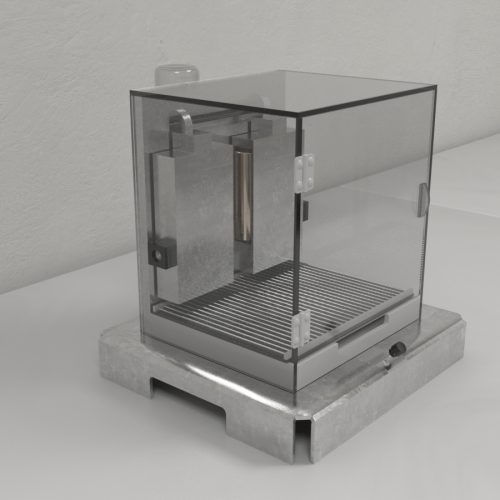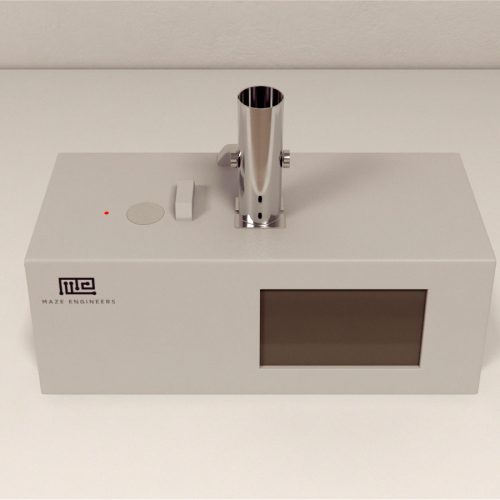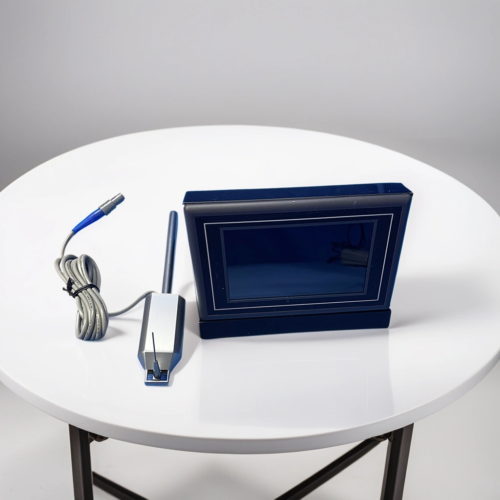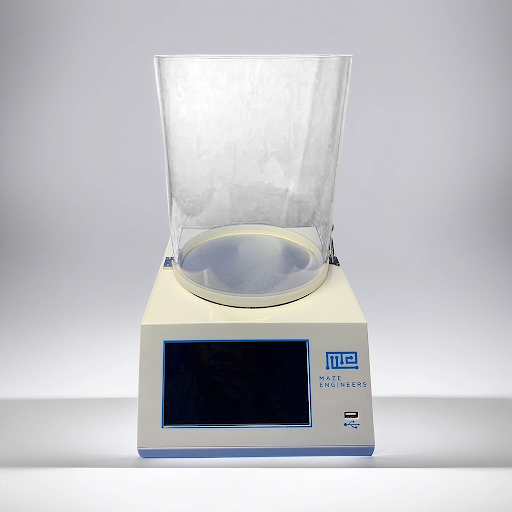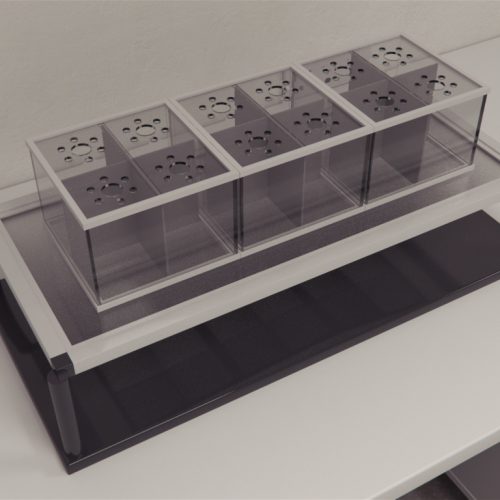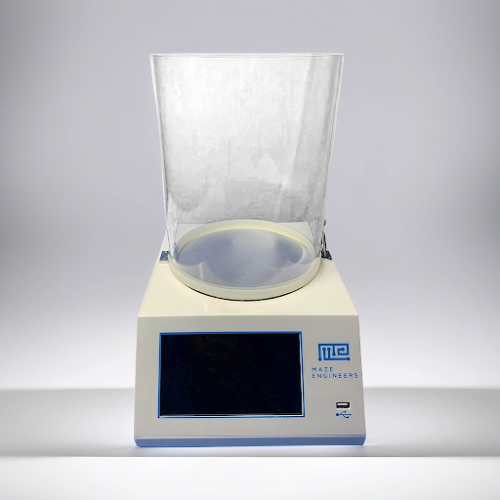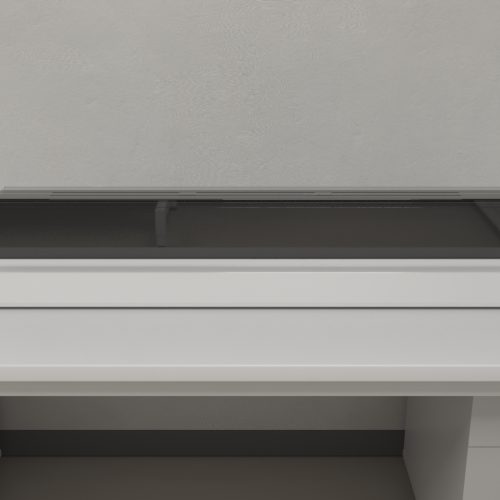2.2 Mechanical Pain Assays
Mechanical pain assays are commonly used in the assessment of mechanical allodynia and hyperalgesia. One of the earliest methods of mechanically-induced pain was through the manual application of a filament tip with gradually increasing force. This method was adopted from Max von Frey’s research using human patients that were assessed for their pressure sensitivity using calibrated horse hair (von Frey, 1896). Observed behaviors to mechanical stimulation include withdrawal, licking, or shaking of the paw. However, it is unclear whether the responses are, in fact, responses to mechanical pain or mechanical sensibility.
The Electric von Frey is a modern take on the von Frey monofilaments designed by Maximilian von Frey as an esthesiometer in 1896 (Pearce, 2006). The filaments are applied perpendicularly to the skin of the plantar surface in an up-down method until they buckle. The Electric von Frey uses a single filament that permits a range of pressure application. Unlike other tests, the von Frey test does not require handling or restraining of the animal, which reduces the influence of stress on the animal.
Randall-Selitto Test
Similar to the von Frey filament, the Randall-Selitto test uses a pressure applicator to quantify mechanical pain sensitivity. The method was developed by Randall and Selitto in 1957 to evaluate the effect of analgesics on inflamed tissues. Usually, the test involves the application of pressure on the paws (hence the name Paw-Pressure Test), but it can also be used to apply pressure on the tails of the rodents. The test provides a sensitive and rapid measure of pain sensitivity. This test requires the subjects to be habituated to restraining. (For restrainers click here)
2.3 Chemical Pain Assay
Chemical pain assays involve the application or injection of noxious chemical stimuli to induce pain. Depending on the approach observed behaviors could include flinching, licking, and biting of the affected paw.
Formalin Test
The Formalin Test was developed by Dubuisson and Dennis (1977) to study the analgesic effects of morphine, meperidine, and brain stem stimulation. The test involves the subcutaneous injection of dilute formalin into the paw of the animal and observing the pain-related behavioral responses. The test produces a response in two discrete stages, the acute phase, and the tonic phase, within a limited duration of approximately 1 hour.
Acetone Evaporation Test
The Acetone Evaporation Test was first described in 1994 (Carlton, Lekan, Kim, & Chung, 1994) and is used in the assessment of cold allodynia. The test involves dabbing or spraying the plantar surface of the paw of the subject with acetone and observing the pain-related behaviors as the chemical evaporates.
2.4 Operant Pain Assays
Operant pain assays are sensitive, have better validity, and encompass psychological and affective dimensions of human pain. Unlike traditional reflex-based approaches, operant pain assays involve the observation of voluntary behavior. Outcome measures in these assays usually include the duration of contact with the painful stimuli and latency of withdrawal.
The Orofacial Pain Assessment Device (OPAD) was developed by Neubert and colleagues (2005) as an operant system of pain assessment that relies on voluntary behavior. The device design utilizes the reward-conflict paradigm wherein the subject makes a conscious decision of its pain threshold in order to gain the reward. The apparatus is composed of Peltier-based thermode that allow variation of applied temperature in order to assess thermal pain. Additionally, metal wires allow assessment of mechanical pain sensitivity, which can also be simultaneously measured along with thermal pain.
Thermal Escape Test
The Thermal Escape Test uses a shuttle-box paradigm that allows the subject to explore freely. The apparatus includes two chambers that can be individually set to either hot or cold nociceptive temperature or other temperature combinations. The apparatus was developed by Mauderli, Acosta-Rua, and Vierck, 2000 to overcome the short-coming of electrical stimulation-based shuttle-box tests (changing grid floor polarities and current densities due to animal movement).
Conditioned Place Avoidance
The Conditioned Place Avoidance paradigm uses the same principle as the Conditioned Place Preference. The apparatus usually consists of two or three compartments of which one serves as the neutral compartment. Animals are preconditioned to the conditioning chambers following an injection of a noxious substance that induces pain. The following day the subjects are reintroduced into the apparatus without the injection. This test allows observation of avoidance behavior that is associated with pain. However, the test requires significant learning, which can interfere with pain-related behavior observation. Further, learning can be impaired due to pain or analgesic treatment.
Place Escape-Avoidance Paradigm
Similar to the Conditioned Place Avoidance paradigm, the Place Escape-Avoidance Paradigm uses a two-chamber apparatus to allow observation of pain-related behavior. The paradigm involves stimulating, using noxious stimulus, the painful paw in one of the chambers and the non-painful paw in the other chamber. Subjects can be seen opting for the chamber where the non-painful paw is stimulated to escape the unpleasantness of the other chamber.

